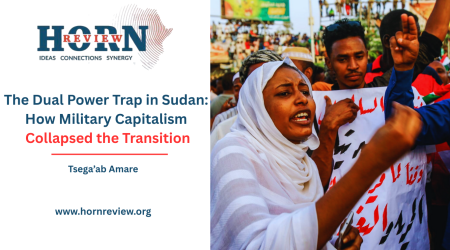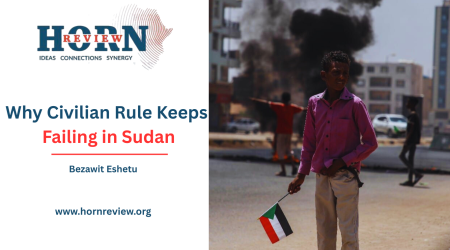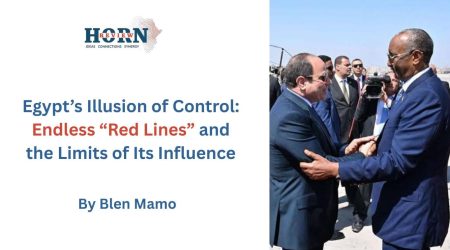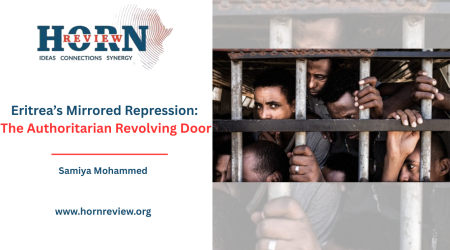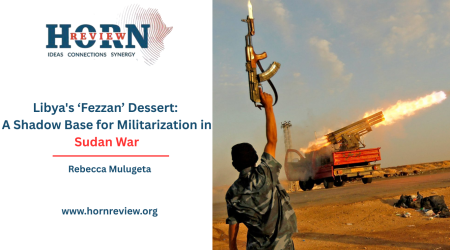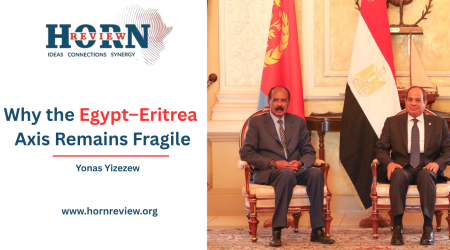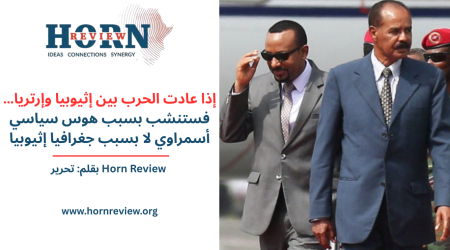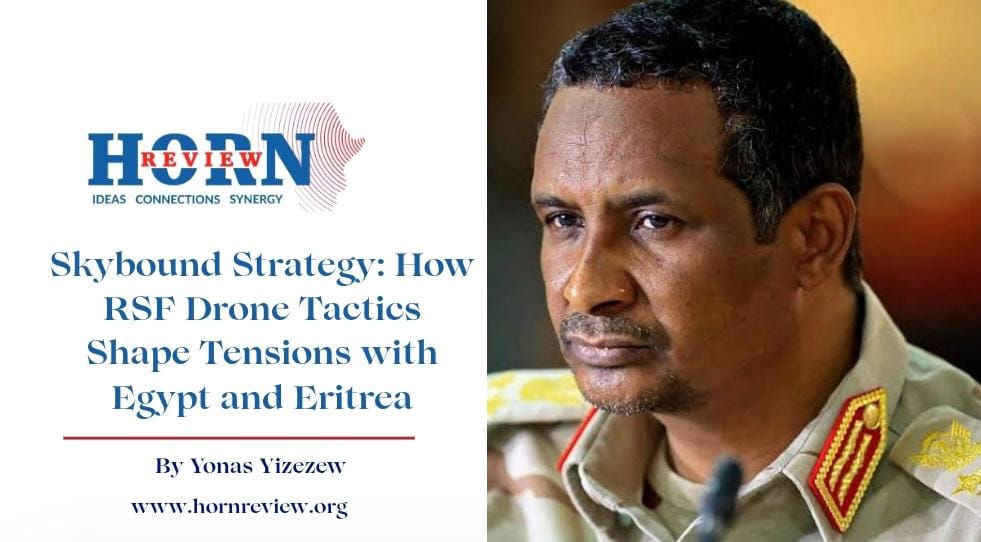
27
Oct
Skybound Strategy: How RSF Drone Tactics Shape Tensions with Egypt and Eritrea
With drone and remote aviation, attackers can strike at lower cost, defenders become more exposed, and logistics hubs assume strategic prominence. Such systems bring political orders and battlefield effects closer together and increase ambiguity over attribution and target legitimacy. This describes the operational environment that the Sudan war now occupies.
RSF’s Mohammed Hamdan Dagalo declaration that aircraft and drones launching from neighboring countries are “legitimate targets” is a political act as much as a military threat. It seeks to reshape the choices of capitals by turning logistics and airports into objects of strategy. Hemedti addresses at least three audiences at once. He speaks to foreign capitals that might host or permit flights into Sudan, to the SAF and its backers who rely on those flights, and to domestic and regional audiences who monitor RSF strength.
The group has repeatedly attacked runways, fuel depots and aviation facilities. These attacks aim not only to inflict material damage. They aim to deny the SAF freedom of movement, to raise the cost of SAF resupply, and to shape the political message about who can operate in Sudan’s airspace. Recently, the RSF struck Khartoum airport and Port Sudan facilities, disrupting reopening plans and civilian services. That pattern is consistent with a strategy that treats air and logistics infrastructure as decisive terrain. The October drone attacks that threatened the reopening of Khartoum International Airport show this in clear terms.
The recorded address expanded the RSF’s target set to include third-country airframes and airports. The statement likewise shifts the calculus for external actors. What had been plausible deniability or plausible neutrality can now become grounds for kinetic response.
The operational pattern in Sudan has two linked features. First, aircraft and drones now shape the rhythm of fighting. The SAF depends on flights for resupply, medical evacuation and selective strikes. The RSF depends on drones to interdict runways, to hit concentrations and to signal that external support will be costly. Second, outside basing and transit arrangements have emerged as operational lifelines. It has repeatedly pointed to flights and materiel transiting Eritrea and other neighboring states in ways that benefit SAF operations. Those links are politically sensitive, but they have operational consequence. If aircraft operate from foreign soil to influence the battlefield in Sudan, they become not only logistical conveniences but potential triggers for cross-border targeting by parties inside Sudan.
That logic helps explain why Eritrea and Egypt are central to this crisis. Multiple investigative and regional reports place Asmara in the logistics and basing equation in ways that materially affect the course of the war. These accounts describe three related features. First, Eritrea appears as a permissive transit point for SAF-linked flights and shipments. Second, Eritrea hosts militia and training sites that are connected to forces operating along the Sudanese border. Third, bilateral security arrangements between Khartoum and Asmara have intensified, including agreements on intelligence and logistics cooperation. Taken together these patterns mean that Eritrea is not a passive neighbor. It is a node in the operational architecture that sustains one of the parties to the conflict. Asmara extends Khartoum’s capacity to continue the fighting and blurs the line between internal conflict and regional contestation. Eritrea’s support to proxies and militia networks increases local violence and opens new fronts along shared borders, including with Ethiopia, given the current tensions in the region. These interventions raise the risk of cross-border strikes, heighten mistrust among neighboring capitals, and complicate diplomatic efforts to mediate a ceasefire. Eritrea’s actions do not simply sustain one side. They reshape the regional security environment and increase the likelihood that the Sudan war will spill beyond its borders.
Eritrea’s posture has also several effects. It reduces the SAF’s vulnerability to RSF drone strike by offering alternative basing. It allows the SAF to sustain operations that might otherwise be impossible. It also makes Asmara a potential target in the RSF’s calculus. For the RSF, the value of naming third-country flights as legitimate targets is that it makes hosting states choose between support and exposure. Eritrea’s choices therefore carry operational consequences for the course of the war.
Egypt’s stake is different but no less consequential. Cairo has long treated Sudan as a strategic backyard. Egypt has been a critical source of weapons and supplies for al-Burhan’s forces, often channeled through its own territory or via Eritrea.
Hemedti’s warning carries direct implications for Egypt. However, Cairo, with its superior military capability and advanced air defense systems, might not expect a direct drone strike from the RSF. Yet the statement might inject caution into Egyptian calculations. It serves as a deterrent signal, reminding Egypt that its deepening involvement in Sudan’s war could carry unforeseen risks. Should Egypt expand its support for the Sudanese Armed Forces whether through intelligence, logistics, or air operations, it could provoke an RSF response.
If such a response were to include a drone strike on an Egyptian aircraft or an airbase inside Egyptian territory, it would amount to a casus belli—an act of war. The Egyptian public and military establishment would not tolerate such an attack without retaliation. That outcome would mark an escalation, transforming Sudan’s civil war into a wider regional confrontation.
On the other hand, the alleged RSF backer, the United Arab Emirates, figures prominently in the subtext of Hemedti’s warning, signaling to Abu Dhabi that its supply channels remain politically indispensable and should not be disrupted. The statement thus serves a dual purpose of deterrence and reassurance. It aims to deter hostile neighbors while reassuring its backers that its covert partnership enables the RSF to project force and negotiate from strength in a conflict that has become both regional and internal.
While some question the RSF’s technical capacity to project drone strikes beyond Sudan’s borders, other credible reports indicate that the group possesses one-way attack drones with operational ranges of thousands of kilometers. Such capability would place Egyptian and Eritrean airports within potential reach of RSF strike operations.
Several connected themes emerge from these facts. First, drones lower the threshold for cross-border escalation. They allow a non-state or hybrid actor to threaten or to strike assets that operate from third-country soil while maintaining a degree of deniability. Second, basing and transit become strategic liabilities. A state that allows its airfields to be used risks being drawn into another state’s conflict. Third, the line between military and civil aviation blurs in practice if combatants use the same airports or if civilian flights move materiel that can be repurposed. Fourth, the presence of training camps and armed groups across borders makes the conflict multi-dimensional. It links air power to ground proxies and to long-term political contests.
These dynamics create two policy risks that require urgent attention. The first is misattribution. In a crowded regional airspace, the origin of a strike can be contested. Misattribution can lead to sudden retaliation and uncontrolled escalation. The second risk is regional contagion. If one neighboring state is attacked or perceived to be targeted, alliances such as Eritrea will harden and the conflict could regionalize quickly.
In the next phase, three pathways seem plausible. In the least dangerous path, neighbors accept the political cost of neutrality or of stricter oversight. They close transit that could be used for strikes and they allow monitoring of flights. In a more unstable path, isolated incidents and periodic attacks on aircraft or airports erode trust and create chronic risk. In the worst case, a successful RSF strike on a third-country airframe or airport produces retaliation. That retaliation could take the form of direct military strikes, air defense escalation, or a wider mobilization that draws in Egypt, Eritrea or others. The Horn of Africa would then face a sustained and much wider conflagration.
States that host or facilitate flights should immediately assess the political cost of continued support. If they persist, they must also prepare for the defensive and diplomatic consequences. In addition, outside powers with influence should make it clear that attacks on third-country airports would trigger political isolation and potentially punitive measures.
In short, Hemedti’s warning is not rhetorical excess. It is an operational logic exposed in public. The RSF has already used drones to shape the battlefield. By naming third-country flights as legitimate targets, the RSF forces other states to choose between support and exposure. Eritrea’s role as a logistics and training node makes it particularly vulnerable. Egypt’s geopolitical weight gives it leverage, but also increases the stakes if it is perceived to be a party to the aerial supply equation. How states respond will determine whether the conflict remains contained inside Sudan or becomes a prolonged regional war.
By Yonas Yizezew, Researcher, Horn Review

